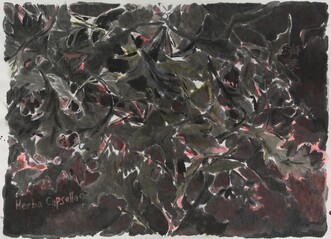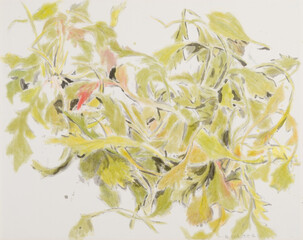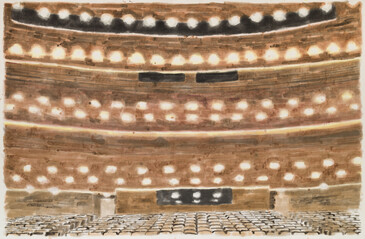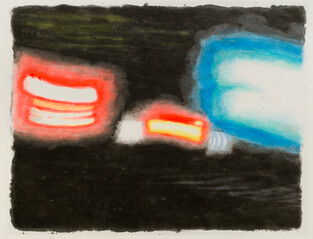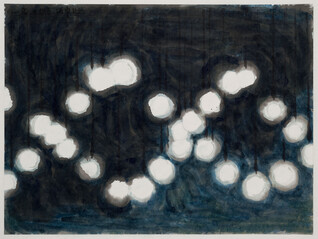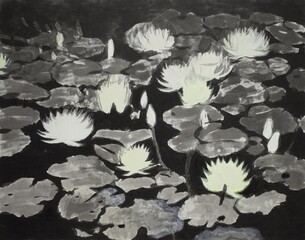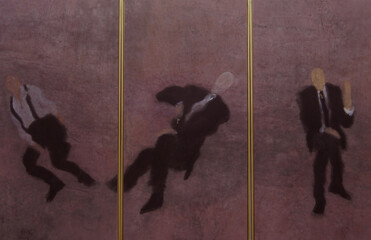Solo Exhibition ShanghART, Shanghai
Opening: 2018/09/08, 16:00-18:00
Duration: 2018/09/08 – 2018/10/21 (Tue.-Sun. 11:00-18:00, Mon. Closed)
Address: ShanghART Shanghai, West Bund, Bldg.10, 2555 Longteng Avenue, Xuhui District, Shanghai, China, 200232
This September, ShanghART Gallery will be honored to host an exhibition of works by Wu Yiming, “Painting the Banal”. These works are a continuation of the artist's experiments in the use of a spare and refined painting style over the past few years. Full of expressiveness, they reveal the feelings, the literary sensibility and the spiritual value of contemporary imagery as it is shaped by the ink.
Thanks to creative efforts that have grown increasingly personal in recent years, Wu Yiming's works have blazed for themselves a “Third Way” in between contemporary pictorial consciousness and the traditional spirit of Chinese painting. By depicting scenes of everyday life, they pierce through to the deepest sensorial layer of our experience of the present. Although these works appear to reference the frankness and concision of traditional freehand brushwork, there is more to them. In the ordinary glimpses of life that Wu depicts, flowers, tree shadows or city lights are no longer presented before our eyes with the matter-of-factness of "objects"; indeed, they are replaced with experience itself, directly rendered and laid bare with the vividness and the expressive power of ink and brush strokes.
In the words of Italian curator Monica Dematte, “by choosing the medium that he feels he is most in tune with, and by considering the reason behind this choice, the artist engages in a deep self-analysis that allows him to view himself more clearly and to formulate a unique, subjective interpretation of the world.”
As a result, “Painting the Banal” refers both to the production of a visual representation within the painting, but also to a reiteration on the picture plane of the artist's experience of painting itself. What it reflects is rather a subjective visual consciousness than a result; it stands for the resistance of an individual being, by means of his concrete experience of reality and of his own emotions, against the spiritual crisis so evidently manifested by contemporary life.
It is also on this level that one may notice most clearly the new strides accomplished by Wu Yiming in his practice over recent years. While his early works would always make both the public and art critics waver between the Chinese tradition, Western contemporaneity, "New Ink" or other movements in choosing the frame of historical judgment or theoretical awareness to consider them, Wu's recent works increasingly elude such constraining frameworks, and instead, display a mature tranquility in which the artist is free to do as he pleases, without ever going astray.
“A flower is a flower, a tree is a tree”: this is precisely the self-sufficient state that is brought about by an abundant experience of painting—and it constitutes the deepest spiritual core of the “Painting the Banal” However, on the other hand, the "freehand-painted" things, sceneries, light, or shadows are but depicted objects; the actual subject, hidden behind the canvass, is in fact the artist himself. Therefore, the “Painting the Banal” can be viewed to large extent as the collision and the fusion on the picture plane of “minor” painted objects with a “major” human. Indeed, for the artist, the poetry of everyday life is evoked in between the frankness of brush strokes and the unspeakableness of experience.
In the Shepherd's Purse series, which gathers new works from 2018 that form part of this exhibition, the public is granted a glimpse of the artist's depiction and understanding of objects, in between being and nothingness. This wild vegetable, beloved of the Chinese, has a most simple and unadorned appearance; however, drawn in Wu's ink, it is endowed with a blooming, enchanting vitality, and expands like a voice suddenly resonating through silent space. As for the Curtains series, it displays a scenery of a different spirit altogether: the perspective of these paintings brings to mind the most ordinary moments of life, as if they were corridors of time, their shapes at once blurry and mottled, shuttling back and forth within our consciousness.
Besides those meticulously depicted colors and patterns of curtains and vegetables, in Wu's Light series and in his representations of urban sceneries, which he has worked on continuously over the past two years, one can also clearly sense this “slowness” of time. It is experience itself, revealed on the canvass, but also an act of contemplation and introspection carried out by the artist in the silence of his solitary corner.
Press Kit
Click to Download
邬一名:只控制80%,剩下的20%留给墨和纸 | Hi Art
邬一名:水墨≠东方精神 | Art Absolute
邬一名:9102年,消失的文人气质与水墨精神 | 喜马拉雅美术馆 客厅FM









